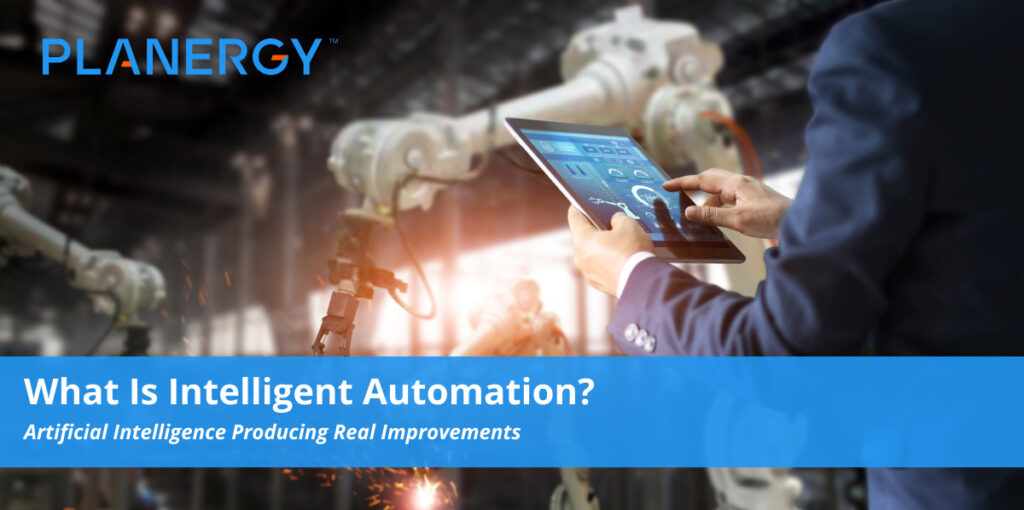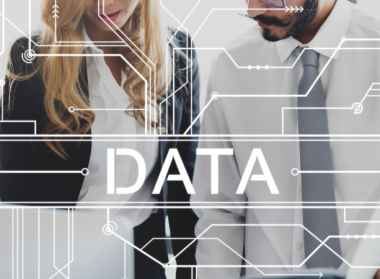It’s hardly a secret that new technologies are rapidly, and in many cases, radically, transforming the way companies around the world do business.
But even as process automation, natural language processing, software robots, and other next-generation automation technologies bring true digital transformation to a variety of industries, there’s one area—decision-making—that has remained in human hands at many businesses.
Traditionally, the argument against granting more than the most basic of decision-making duties to artificial intelligences has been driven by the hardware and software limitations of those same intelligences.
However, as automation systems have grown increasingly sophisticated, computing power has grown robust enough to support such sophistication, and machine learning has created software robots and physical devices with the ability to make not just simple decisions, but contextually sensitive ones, a new paradigm known as intelligent automation has emerged.
This new technology has the power and potential to fundamentally alter the way businesses complete both routine tasks and larger strategic initiatives in pursuit of organizational goals.
Intelligent Automation: The Basics
Answering the question “What is intelligent automation” requires an understanding of two related, but distinct, concepts: automation and artificial intelligence
Automation is as old as the first industrial revolution, and has long been relied upon by businesses of all types to improve production speed, simplify or eliminate the need for direct human interaction in repetitive tasks, etc.
Artificial intelligence is a group of technologies that includes machine learning, visual and speech recognition, and natural language processing, or NLP (which allows software to accurately respond to queries phrased in normal human speech and writing patterns, rather than specialized, computer-friendly formats), among others.
The goal of an artificial intelligence system is to create an application or device with the same reasoning and learning capacity as a human being—but with the power, speed, and accuracy of computer processing.
The synthesis of these two concepts is what we call intelligent automation, or in some contexts, intelligent process automation.
Used effectively, intelligent automation can generate significant savings, efficiency improvements, and greater competitive advantage through:
- Reduced human contact with essential processes, which minimizes human error and improves both speed and accuracy.
- Elimination or reduction of waste, including paper, storage for physical documents, and additional staff hours required to maintain and perform manual, pen-and-paper processes.
- Redirection of staff talents and energy toward higher-value tasks and strategic initiatives.
- Improved prescriptive and predictive analytics that leverage big data to produce real-time, actionable insights and more intelligent decisions.
- Greater employee morale and user experience.
- Better customer experience, both in sales and customer support.
BPM, RPA, and APIs—Oh, My!
Achieving the best savings and value possible with intelligent automation requires an understanding of three secondary processes that leverage the capabilities of artificial intelligence and automation.
- Business Process Management, or BPM: Whatever is worth doing is worth doing right—and in the case of BPM, “right” means “as efficiently, effectively, and profitably as possible.” Business process management is a system by which companies identify, analyze, and refine all their business processes, in all business units, for optimal performance and return on investment. Automation driven by artificial intelligence makes it possible for software to continuously monitor and adjust processes, learning from past data to make smart decisions in the present, in real time.
- Robotic Process Automation, or RPA: is a subset of BPM, used to automate and streamline basic processes with the help of software robots, or applications created to tackle specific tasks that don’t require advanced, contextual reasoning or decision making. RPA is in the trenches, doing the grunt work, while BPM is back at HQ, making policy and putting together a strategy for even greater optimization.
- Application Program Interfaces, or APIs: Specialized software protocols and platforms can connect disparate applications to create a single, comprehensive software environment that shares data management, analysis, and process improvements. APIs use intelligent process automation to connect and route information seamlessly as it moves through the new hybridized environment, making sure you can communicate, collaborate, and put both data and the insights it produces to use in real time. Two of the most common API platforms in use today are Simple Object Access Protocol (SOAP) and Representational State Transfer (REST).
Automation driven by artificial intelligence makes it possible for software to continuously monitor and adjust processes, learning from past data to make smart decisions in the present, in real time.
Intelligent Automation in Action
While it might sound like science fiction, intelligent is already in use today—consider these examples:
- Self-driving cars. Being able to perceive, understand, and react to the real world requires a complex set of processes, and achieving true autonomy for vehicles means these processes must function on their own with minimal oversight. We’re still a few years away from driverless cars dominating the roadways, but companies like Waymo are already putting the capabilities of machine learning and context-sensitive decision-making to the test.
- Data Analytics. Superstar supercomputers like IBM’s Watson have made a name for themselves solving complex problems and mopping the floor with Jeopardy champions, but they’re not the only ones turning Big Data into valuable insights. For example, PLANERGY’s procurement solutions include advanced data analysis tools that help you corral and analyze all your spend data and use it to improve everything from purchase order workflows to budgets, financial reporting and forecasting, and supplier management.
Artificial intelligence can digest both historical and current data to provide you with advice for improving not just your existing processes, but a glimpse of how to take advantage of future opportunities while dodging potential disasters waiting to happen. AI can parse vast amounts of data more quickly and thoroughly than any human to spot potential areas of improvement, dangerous risk exposure, or inconsistencies that might indicate fraud, theft, or process failures. - Workflow optimization. For businesses of all sizes and types, figuring out how to maximize efficiency, productivity, and profitability is an essential part of competing effectively. BPM supported by RPA is one way to transcend the traditional limits of human capability. Software robots don’t need food, sleep, or bathroom breaks, and can not only perform routine tasks longer than an average human ever could, but do so much more quickly and accurately at a scale several orders of magnitude above even the speediest, most tenacious staff member.
It’s not just software robots tackling difficult human jobs at scale, either. Retail titans like Crate and Barrel, Walgreens, and Amazon are investing in robotics that rely on intelligent automation and putting them to work in their warehouses. These robots are designed to navigate busy warehouses on their own, making decisions that meet demand for precision, accuracy, and speed while avoiding accidents and minimizing expense.
Intelligent automation fosters improved collaboration in a number of ways. It frees up your staff to focus on more productive and strategic tasks, yes. But being able to process environmental data and react accordingly means that in the future, both software and physical robots will be able to collaborate closely with human workers in the same way assembly line robots at Volkswagen already do today. This method of shared work holds tantalizing possibilities, including the transfer of physically demanding tasks or work in dangerous environments to machines using artificial intelligence (such as robot soldiers, drones, and construction/rescue crews), while still allowing humans to guide the overall process and step in as needed when organic intelligence is best.
The Future is (Artificially) Intelligent
Autonomous vehicles. Software robots pushing productivity to new frontiers. Rich insights, harvested in real time from vast oceans of information by robots and put to work in support of human innovation.
Companies using intelligent automation as part of their overall BPM strategy are making a smart and strategic investment in their own future success by creating a software and hardware environment that can work with, as well as for, humans to achieve levels of productivity and efficiency unimaginable even a few decades ago.
The marriage of automation and artificial intelligence has borne mighty fruit, and the future holds the promise of even greater gains as machine learning allows our creations to understand and collaborate with us like never before.




